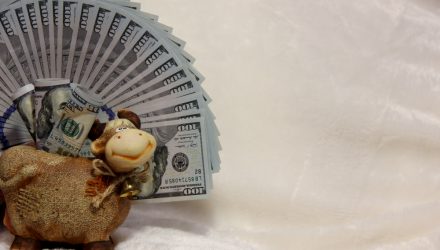ETF Trends CEO Tom Lydon discussed the Pacer US Cash Cows 100 ETF (COWZ) on this week’s “ETF of the Week” podcast with Chuck Jaffe on the MoneyLife Show.
A strategy-driven ETF that aims to provide capital appreciation over time by screening the Russell 1000 for the top 100 companies based on free cash flow yield.
Despite the uncertainty, you can still find value if you use the right approach. Value investing does not mean an investor has to give up on innovative companies. For example, 35% of Russell 1000 technology companies now show a price-to-earnings ratio below market value. Value investing is also about regular rebalancing to adhere to a rules-based investment methodology to target the best value in the market place.
COWZ has benefited from a rules-based approach to value investing. Since the recovery from March 2009 when the Russell 1000’s P/E was around 11, the price to earnings ratio has expanded 93.50% in the Russell 1000. By rebalancing, the Pacer U.S. Cash Cows 100 Index has maintained P/E’s at lower valuations while offering higher capital appreciation.
This type of value play provides a very cheaply discounted opportunity for long-term investors. The Pacer U.S. Cash Cows 100 Index shows a -50.55% discount to the Russell 1000 Index, compared to its historical average of -32.79%. Additionally, the Index even trades at a -40.80% discount to the Russell 1000 Value Index, compared to its historical average of -22.25%.
COWZ has also showed continued outperformance against the Russell 1000 Value benchmark and attractive valuations on free cash flow yield and P/E ratio.
The COWZ indexing methodology
COWZ is an objective rules-based methodology that uses a quality screen to select the top companies in the index universe. The underlying index selects companies from the Russell 1000 Index and screens those based on average projected free cash flows and earnings over each of the next two fiscal years, excluding financial companies other than real estate investment trusts.
Component companies are ranked by free cash flow yield for the trailing twelve-month period. Equity securities of 100 companies with the highest free cash flow yield are included in the underlying index. Holdings are also weighed in proportion to their trailing twelve-month free cash flow with a capped 2% of the weight of the index for any individual company.
The result is an indexing methodology that has provided high free cash flow yields, low price-to-earnings ratios, improved upside capture ratios, and lower downside capture ratios, producing an investment strategy with enhanced long-term risk-adjusted returns. As of the end of June 2020, the Pacer U.S. Cash Cows 100 Index showed an 8.67 free cash flow yield, 11.57 P/E, 116.38 upside capture ratio to the Russell 1000 Index, and a 95.82 downside capture ratio to the Russell 1000. In comparison, the Russell 1000 had a free cash flow yield of 3.35 and a P/E of 23.04.
What is Free Cash Flow?
Free cash flow is the cash left over after a company has paid expenses, interest, taxes, and long-term investments. It is used to buy back stocks, pay dividends, or participate in mergers and acquisitions. The ability to generate a high free cash flow yield indicates that a company is producing more cash than it needs to run the business, which can then be invested in growth opportunities.
Free cash flow producing companies generally have three defining characteristics: productive, reliable, and self-sufficient. The companies generate more cash flow then they spend, which allows them to grow without external financing.
The free cash flow is a sturdy measure of profitability than earnings subject to manipulation and accounting assumptions. Lastly, as the companies are less reliant on capital markets for financing, they won’t dilute their issued company stocks.
Listen to the full podcast episode on the COWZ ETF:
For more podcast episodes featuring Tom Lydon, visit our podcasts category.

